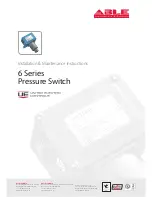
Mypower
S4100
Troubleshooting
Maipu Confidential & Proprietary Information
Page
84
of
124
Route Troubleshooting
This
chapter describes the basic idea, common method, and life cycle of
RIP, BGP, OSPF, and ISIS dynamic routing protocol fault.
Main contents:
z
OSPF Troubleshooting
z
RIP Troubleshooting
z
BGP Troubleshooting
z
IS-IS Trou
bleshooting
OSPF Troubleshooting
Basic Idea of OSPF Troubleshooting
Collect the detailed network topology information. The dynamic routing protocol
is
running between the route switching devices. After the fault occurs, you should locate
the fault, for example, which routes or neighbors are of lack in the routing table.
Check whether the routing devices are connected. The dynamic routing protocol is
running over the IP layer. To exchange routing protocol packets between routing
devices, th
e link layers must be connected. Locate the faulty routing
switching device. On the routing switching device, use the show tool to
check the relevant information, for example, OSPF interface table and
neighbor table. Through the collected information, you can generally
locate the fault. Then, use the debug tool provided by the system to
analyze the packet interaction to find out the cause of the fault. The
debugging cove
rs:
1.
Ensure all connections are normal.
2.
Ensure OSPF is configured and no fault occurs.
3.
Ensure the states of all neighbors are Full or Two-way.
4.
Ensure all neighbors are in the neighbor table.
















































